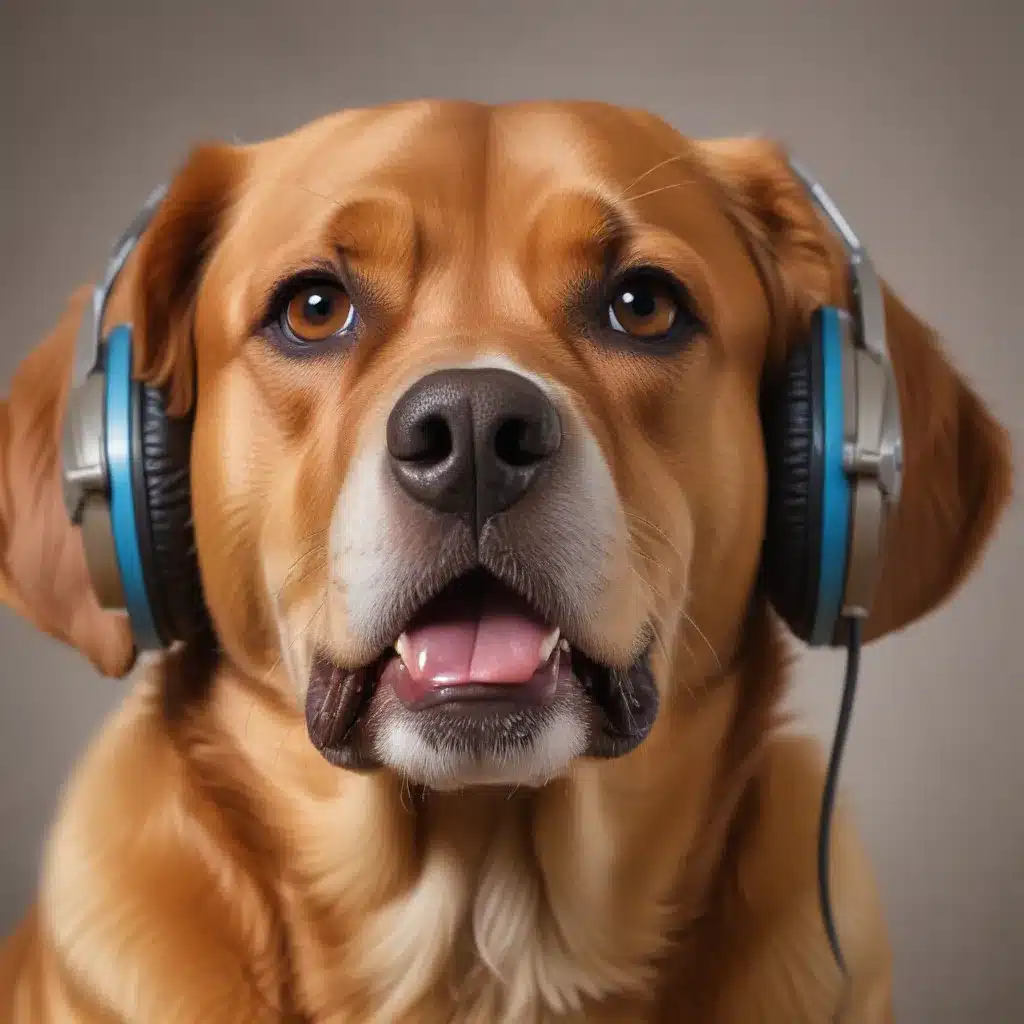
Coping with Canine Cacophobia
As a proud dog parent, I’ve learned that our furry friends can experience a wide range of emotions, just like us. One of the more challenging issues they can face is a deep-seated fear of certain noises, a condition known as noise phobia. It’s heartbreaking to witness your beloved companion trembling in terror at the sound of thunder, fireworks, or even the vacuum cleaner. But the good news is, with patience and the right approach, you can help your pup overcome this debilitating phobia.
Understanding Noise Phobia
Noise phobia is an excessive, irrational fear of specific sounds that can develop in dogs of any age or breed. It’s not just a case of being startled by a loud noise; it’s a persistent, intense fear response that can drive your dog to desperate measures to escape the sound.
According to the American Kennel Club Canine Health Foundation, noise phobia is “an irrational, intense and persistent fear response” that can manifest in a variety of behavioral symptoms. These can include hiding, urinating, defecating, chewing, drooling, panting, pacing, trembling, shaking, and even attempts to escape by jumping through windows or chewing through walls.
The instinctive behavior of a noise-phobic dog is to seek shelter and avoid the perceived danger. As the Veterinary Practice website explains, “Trying to escape from the noise, a dog’s normal instinctive behavior is to seek shelter to avoid danger.” But when dogs overreact to sounds that don’t actually represent a threat, that’s when things can go awry.
Identifying the Triggers
The first step in helping your dog overcome a noise phobia is to identify the specific sounds that trigger their fearful response. Common culprits include thunderstorms, fireworks, gunshots, car backfires, and even household appliances like vacuum cleaners or blenders.
Pay close attention to your dog’s behavior and try to pinpoint the exact noises that cause them distress. This will help you tailor your treatment plan and desensitization strategies to their unique needs.
Building a Calming Environment
One of the most effective ways to help a noise-phobic dog is to create a safe, comfortable space where they can retreat when they hear the troubling sounds. This might be a cozy crate or a quiet room with soft bedding, familiar toys, and soothing scents like lavender or chamomile.
Homeopet recommends using calming aids like pheromone diffusers or calming music to help your dog feel more at ease. You can also try draping a heavy blanket over their crate or designated safe space to muffle the offending noises.
Desensitization and Counterconditioning
The key to overcoming a noise phobia is a two-pronged approach of desensitization and counterconditioning. Desensitization involves gradually exposing your dog to the troubling sounds at a low volume, while counterconditioning aims to replace their fearful response with a positive one.
Start by playing recordings of the noises that trigger your dog’s phobia at a barely audible level, and gradually increase the volume over multiple sessions. Pair these sounds with treats, playtime, or other positive reinforcements to help your dog associate the noises with good things.
VCA Hospitals advises that this process can take weeks or even months, and it’s crucial to move at a pace that doesn’t overwhelm your dog. The goal is to help them remain calm and build a positive association with the previously fear-inducing sounds.
Medication and Professional Help
In some cases, your dog’s noise phobia may be so severe that they require additional support, such as prescription medication or the guidance of a certified animal behaviorist. According to the PDSA, characteristic behaviors like hiding, urinating, defecating, and attempts to escape the noise may warrant a consultation with a vet or animal behavior specialist.
These professionals can help determine the underlying causes of your dog’s phobia and develop a comprehensive treatment plan, which may include a combination of behavior modification, medication, and environmental management.
Staying Calm and Consistent
Throughout the process of helping your dog overcome their noise phobia, it’s crucial that you remain calm, patient, and consistent. Your dog will take their cues from you, so if you’re visibly anxious or frustrated, it can exacerbate their fear.
Instead, try to project a sense of confidence and reassurance. Praise and reward your dog when they remain calm in the face of a troubling noise, and avoid comforting them when they’re in the throes of a fearful episode, as this can inadvertently reinforce the behavior.
Remember, overcoming a noise phobia is a journey, and it may take time and persistence to see significant progress. But with the right approach, you can help your furry friend conquer their fears and enjoy a happier, more confident life.
And who knows, maybe one day, you and your dog can even enjoy a good old-fashioned fireworks display together – as long as you’ve got your trusty iHaveDogs.com noise-cancelling headphones handy, of course.

